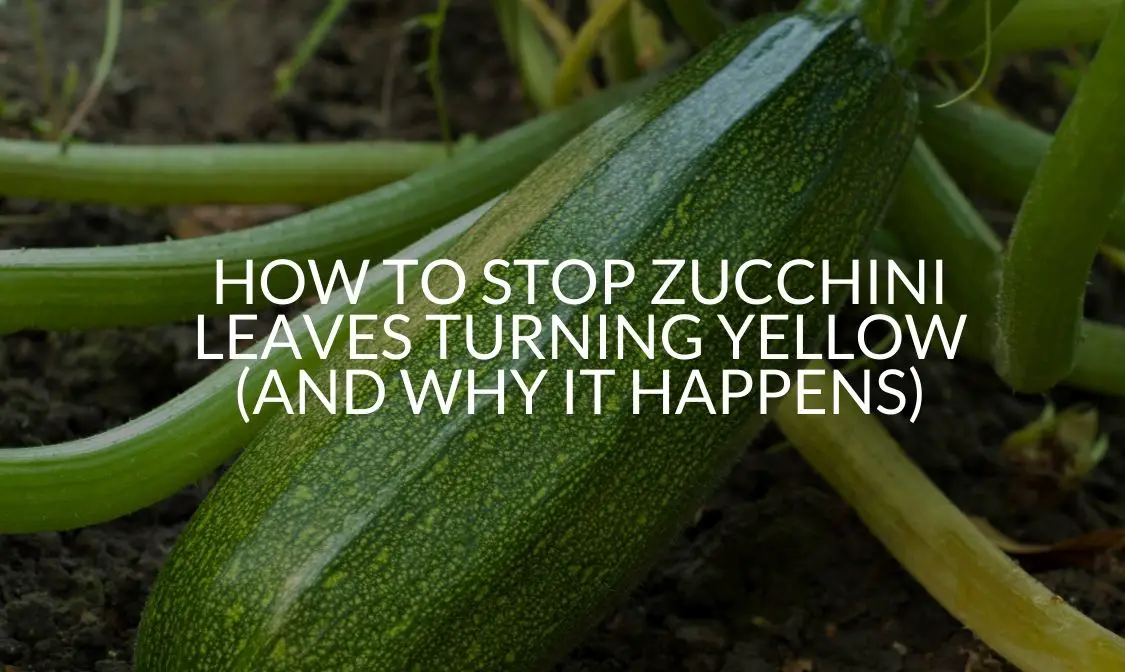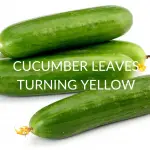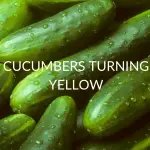The zucchini, or courgette as the seasoned chef may call it, is a very popular plant to grow in both commercial and home gardens. However, zucchini leaves turning yellow is not an uncommon occurrence and any zucchini planter must understand how to deal with this issue if it arises.
One reason for the popularity of growing zucchinis is their ability to prosper and proliferate. If you’re looking for a plant that will fill your garden with leaves and vines, the zucchini is a great choice. Though, their luscious nature does not free them of common plant problems such as pests, deficiencies, and diseases.
We’ve put together a guide outlining the common issues found when growing zucchini plants and how to solve them. Read on so you can grow your zucchini crop with peace of mind.
Why Are Your Zucchini Leaves Turning Yellow (And How to Stop It)?
The most common cause of yellowing zucchini leaves is a disease called Iron Chlorosis. The yellow leaves are an indicator that your zucchini plant has an iron deficiency. You will first notice the yellowing on the newest leaves and as it worsens, it will move to the older ones.
Do not fear, this is very common in plants of all types. However, once you notice your zucchini leaves turning yellow, it is very important to deal with the problem. If left unattended, an iron deficiency will eventually kill your plant.
For plants, as well as humans, iron is a crucial nutrient. It helps facilitate functions such as chlorophyll production, nitrogen-fixing, and maintaining a healthy metabolism. Thus, if your zucchini plant leaves are turning yellow, it may be a sign that your plant’s vital functions are beginning to fail.
A common misconception with Iron Chlorosis is that the soil is depleted of iron. On the contrary, most soil is very rich in iron. The true issue is that there are other properties of the soil that limit the amount of iron the plant can absorb from it. These other factors are likely one or more of the following:
The pH Level of Your Soil is Too High
If you recall from your high school science classes, the pH level measures how basic/alkaline or acidic your substance is. Plants typically thrive in soil with a pH level of around seven or lower which means it is either neutral or slightly acidic.
To evaluate the pH level of your soil, contact your local gardening experts for a soil test. Any level above seven indicates that your soil is too basic. Alkaline soil makes it very difficult for your plant to absorb its necessary iron.
How to Fix It
Our DIY solution for increasing the acidity in your soil is both simple and affordable. All you need to do is mix two tablespoons of vinegar with a gallon of water and use the solution to water your plants. This acidity of the vinegar will lower the pH level of your soil allowing your zucchini plants to absorb more iron.
Alternatively, you can employ acidic fertilizers. These fertilizers contain ammonium nitrate, ammonium sulfate, or sulfur-coated urea which will also help lower the pH level of your soil. They can be found at any garden supply store or online. You can read more about these here.
Your Soil Has Too Much Clay
Though clay soil is rich in many vital nutrients and has various positive qualities, it inherently lacks organic material. Without this organic material, your zucchini plant’s ability to absorb enough iron is hindered and its leaves will likely begin turning yellow.
How To Fix It
The good news is that we have a simple solution for this issue. We suggest adding compost to your soil. Compost is chock-full of the organic material your soil is lacking.
The compost will increase the amount of organic material in the soil. This will help the plant absorb the iron it needs and thus, reduce the amount of yellow already present in the leaves while also preventing further yellowing.
Your Soil Is Too Wet
If you are growing your zucchini plants somewhere with frequent and heavy rainfall or perhaps, you’re a little overzealous when it comes to watering, your soil could be too damp for iron absorption. In other words, if your zucchini plant is drowned, you may notice its leaves turning yellow.
How To Fix It
If the issue is due to overwatering, simply irrigate your plant less frequently or with less water each time. If the problem has to do with the soil’s drainage mechanisms, consider adding more organic material to facilitate proper drainage.
Clay soil, for instance, can retain water because of its lack of organic material, as mentioned previously. If you’ve ever watered your plants only to find a pool sitting atop the soil’s surface, this likely means your soil has too much clay and can’t absorb the water you’re feeding it.
Adding organic material, like compost, will assist with drainage and absorption. With the right amount of water and proper drainage, your plant will be able to absorb the iron it needs so the leaves maintain their green colour.
Excess Phosphorous
A surplus of a certain nutrient can often be as detrimental as a deficiency when it comes to plant life. Too much Phosphorous is usually a sign of excess non-organic fertilizer or manure. This will inhibit the zucchini plant’s iron absorption as well.
How To Fix It
To correct an excess amount of phosphorous in your soil, you should begin by limiting your use of non-organic fertilizers or manure. If this poses an issue, we recommend adding nitrogen-fixing plants to your zucchini plant’s vicinity, specifically in the same soil.
As fertilizers are used, in part, to add nitrogen to the soil, simply halting your use of them could negatively impact your soil. Thus, we suggest planting nitrogen-fixing plants that assist greatly in adding nitrogen to your soil to replace the fertilizer.
Some nitrogen-fixing plants include beans and peas. So, you’ll be solving your phosphorous issue (and your yellow zucchini leaves) while growing beans, peas, and courgette for a delicious veggie dish!
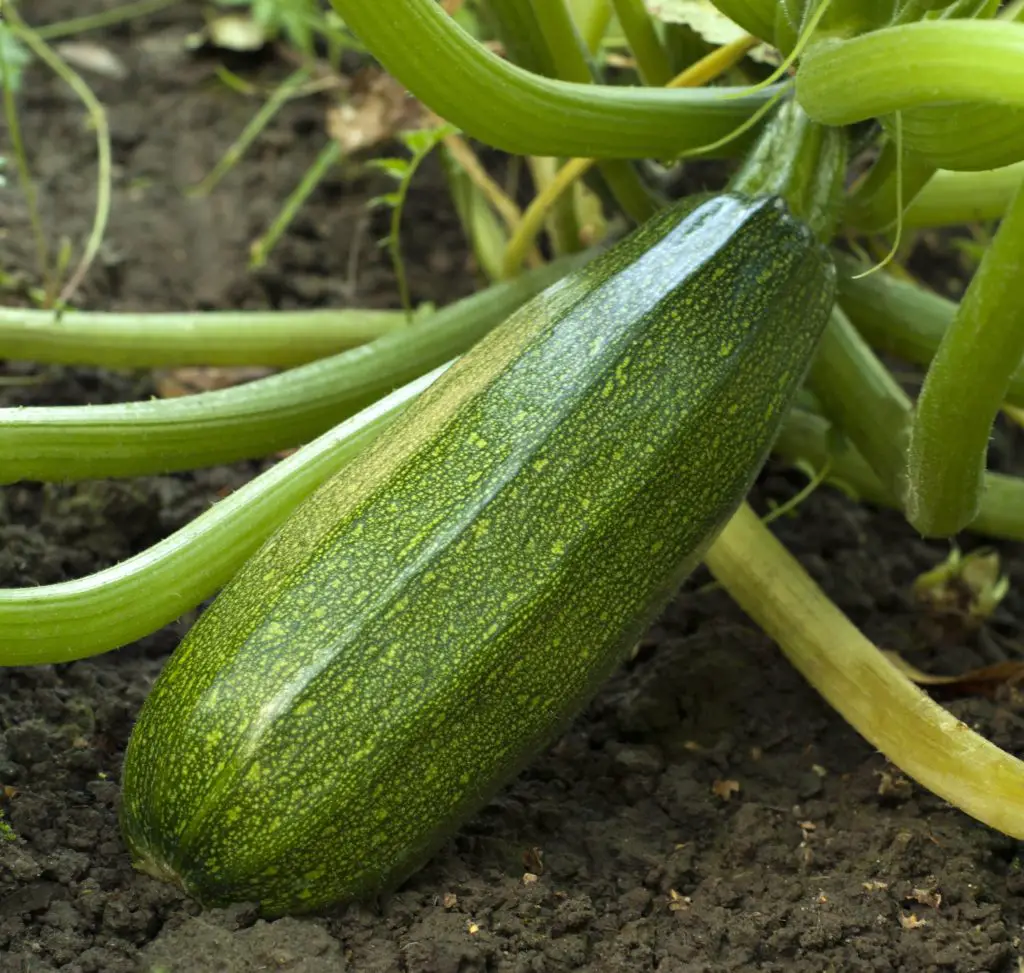
Why Are Your Zucchini Leaves Turning Yellow and Rotting (And how to Stop It)?
So, now that you’re an expert on what to do when your zucchini leaves turn yellow, let’s further explore what to do if they are yellow and rotting. As one would assume, the addition of rotting to yellowing leaves may be a sign of more serious problems. Let’s take a look at the possible explanations and solutions.
Bacterial Wilt
This is a common disease spread by certain beetles that typically attack from June through to August. You’ll notice discolouration (browning) in your zucchini leaves. In some cases, the leaves may also begin wilting and curling at the edges.
How To Fix It
Unfortunately, with this one, you’ll have to give up on the zucchini batch and ensure you have properly cleared its soil to prevent further infestation.
Be sure to pull the plant up from its root and to discard it separately from your compost or anything you will put back into the soil. But do not fear, it won’t permanently damage the soil and you can plant another batch (hopefully with better luck) the next year.
Aphids
A notorious killer of fruits and vegetables is called the Aphid. You will find them on the underside of your zucchini leaves eating away at the plant’s sap and therefore, causing leaves to look as though they are rotting. If caught early enough, however, the zucchini crop can be saved.
How To Fix It
Spray the Aphids away. You can first attempt doing so with shear force. If you use a garden hose and spray the leaves with high water pressure, the Aphids may come loose. If not, we recommend mixing a solution of one part dish soap, one part water, and spraying the leaves one at a time.
If you are hoping for a more natural solution, you may wish to add ladybugs to your garden. Ladybugs snack on Aphids. So, introduce a bug higher on the food chain into your garden eco-system to take care of the problem, the natural way!
Fusarium Crown and Foot Rot
This disease is either soil or seed-borne and will cause yellowing, rotting, and wilting leaves on your zucchini plants.
How To Fix It
To solve this issue, you can try fungicides though they generally don’t prove too effective.
With this issue, prevention is key. Do not overwater your zucchini plant as damp, swampy soil creates a breeding ground for the disease. Plant your zucchinis with ample space in between each plant so they aren’t crowded.
Additionally, be sure to rotate your zucchini crop every two years to avoid diseases such as Fusarium Crown and Foot Rot.
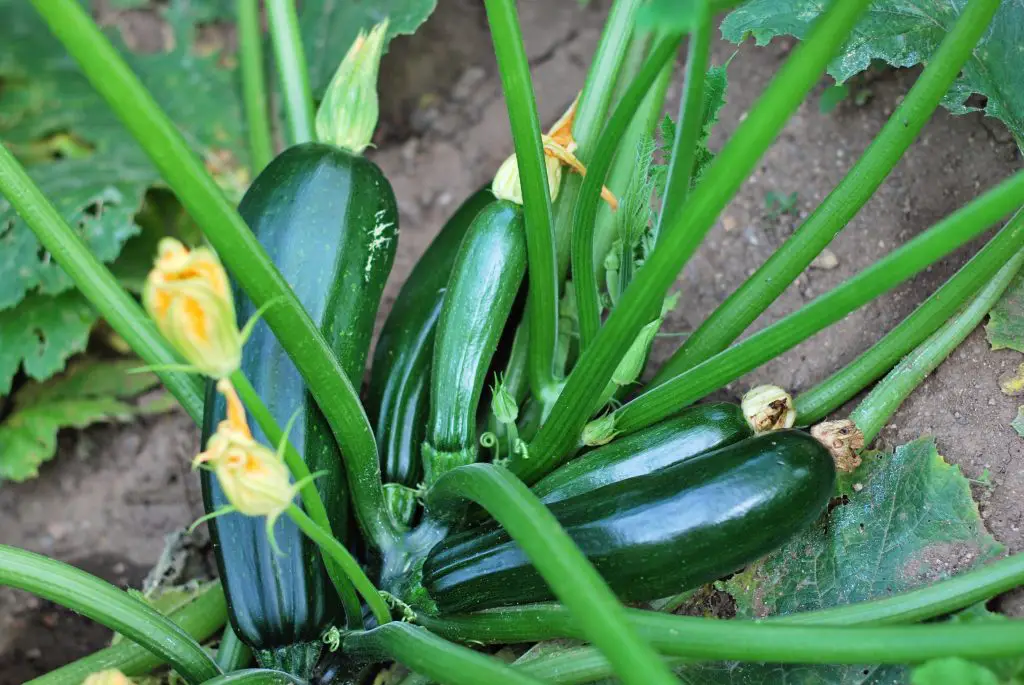
Why Do Zucchini Leaves Turn Yellow and Brown (And What to Do)?
So far, we’ve discussed why your zucchini leaves are turning yellow and why they are rotting in addition to turning yellow. Lastly, we will explore the reasons why your zucchini leaves are turning yellow and brown.
Downy Mildew
This pathogen’s proper name is Pseudoperonospora cubensis. If your zucchini crop is in a damp, humid region, take extra care to examine your plants for Downy Mildew as it thrives in such conditions.
If you notice yellow-brown spotting and a fuzz-like film over your zucchini leaves, it could be Downy Mildew.
Though the disease is common to the squash family and primarily an aesthetic issue only, it can lead to lower production and thus, should be dealt with.
How To Fix It
As with most plant diseases, Downy Mildew is easier to prevent than to solve once it’s already present. So, examine your plants frequently. We suggest giving them a good inspection once a week. If you see any yellowing, browning, deformation, or the beginnings of the aforementioned fuzz, it may be Downy Mildew.
If you catch it early enough, it will be easier to reduce its spreading.
Plant your zucchinis in a dispersed fashion so they have enough room to breathe and grow roots. Air must be able to circulate in between the plants and vines. Also, be sure to consistently remove any weeds that pop up in the soil as they often lead to more pathogens of this nature.
Proper plant hygiene is essential in preventing this Downy Mildew and maintaining the luscious green leaves of a healthy zucchini plant.
Squash Bugs
The squash family, including your lovely zucchinis, fall prey to the “squash bug”. These flat-shaped pests suck out the juice of the zucchini plant, causing the leaves to turn yellow and brown.
How To Fix It
Unfortunately, these bugs can be difficult to control and are resistant to pesticides. We recommend checking your zucchini leaves every day for these bugs so you can mitigate the problem before they take over your garden.
Should You Cut Yellow Leaves Off a Zucchini Plant?
Pruning zucchini leaves is never a bad idea, however, there are a few things to bear in mind when doing so.
You can go ahead and cut off some yellow leaves but be sure to leave at least a few growing. Your zucchini should never be without any leaves. When pruning, cut close to the stem but be sure to not cut the stems themselves as this will leave the plant more vulnerable to disease.
Let’s Get Gardening
Zucchinis are a wonderfully versatile vegetable, and their plants grow abundantly making any garden look luscious and plentiful.
With zucchini care, prevention is usually easier than dealing with a problem once it’s already circulating through your vines. Plant your zucchinis so that they have enough space for air to circulate, do not drown them, and be sure to rotate your crops every two years.
However, if you do spot your zucchini leaves turning yellow, brown, or rotting, try testing your soil for iron deficiencies, inspecting for pests, and evaluating your use of certain fertilizers.
Now, that you’re an expert in zucchini leaves, let’s get gardening!

